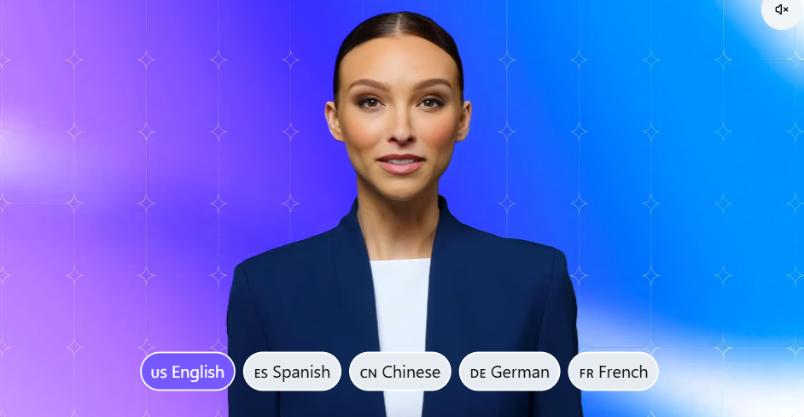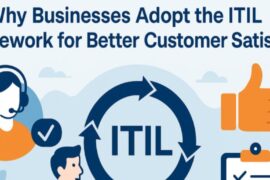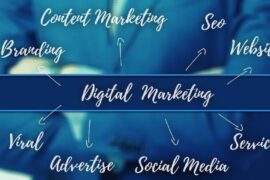Something surprising is happening across big businesses right now, and it’s not the kind of change that gets announced with fireworks. One by one, enterprises are quietly letting go of real human spokespeople and replacing them with sleek, animated digital versions. You’ve probably seen them without even realizing it — those polished, always-on-message talking heads in marketing videos, welcome screens, or corporate presentations. They blink, smile, speak in perfect cadence, and never go off-script. But why is this shift happening now? Why are more and more companies trading warm, living, breathing people for artificially generated faces and voices?
If you’re someone who builds or designs websites for a living, or even someone who just tries to keep up with how businesses communicate online, this change is worth paying attention to. The digital spokesperson isn’t just a trend — it’s becoming a new standard. And the reasons behind it are bigger than just convenience.
Real People Are Expensive, and Digital Ones Don’t Call in Sick
Let’s start with one of the biggest motivators behind this change: money. Hiring a professional spokesperson to appear in videos, commercials, or even short digital promos can cost a lot — especially when you factor in the extras. We’re talking contracts, travel, hair and makeup, production crew, multiple takes, reshoots, editing time, and post-production tweaks. And if that spokesperson becomes unavailable? You’re back to square one, scrambling to find a replacement and spending even more.
Digital spokespeople don’t need hair and makeup. They don’t demand a trailer or a green room. They don’t charge overtime or fly business class. Once you’ve created a high-quality digital representative, you can use them as many times as you want. Change the script? No problem. New product to promote? Just update the text and regenerate the voice. From a budgeting perspective, the long-term savings are enormous. This isn’t just cost-effective — it’s smart business. And for companies trying to scale quickly or operate across several regions, it’s a no-brainer.
They Say the Same Thing Every Time — And That’s Exactly the Point
One thing digital spokespeople have over real ones? They never forget their lines. They never stumble, never miss a word, and never get nervous on camera. This may sound like a small thing, but for large enterprises with strict messaging guidelines, consistency is everything. A real person, no matter how talented, can’t guarantee the same delivery every time.
When it comes to branding, companies want their tone, message, and values to come through exactly as written. And with AI in website design becoming a standard part of content strategy, it makes sense to pair that with a digital representative who reflects the same level of control and precision. You don’t have to worry about bloopers or bad lighting — your digital spokesperson shows up the same way, every time, in every video, on every page. That kind of consistency is powerful, and businesses are leaning into it hard.
You Can Translate a Digital Voice into Dozens of Languages Without Losing the Feel
Now here’s where things get even more futuristic — and honestly, kind of cool. Imagine a company making a single video in English, but needing that same message shared with customers in German, Spanish, Mandarin, and beyond. With a real spokesperson, this becomes complicated. You either need to subtitle everything (which breaks the immersion), or hire voice actors to dub over the original, which never quite sounds right.
But with AI dubbing, you can have the same digital spokesperson speak multiple languages — fluently, with correct pronunciation, and even keeping the same tone and pacing. This isn’t like the clunky robot voices of the early 2000s. These are natural, expressive, and sometimes shockingly human-like. The technology has moved so fast that companies no longer need to create different versions of the same video. They just press a few buttons, tweak the output, and voilà — one spokesperson now speaks to the whole world.
For international businesses, this isn’t just a helpful tool. It’s a game-changer. It allows for truly global reach without multiplying costs or watering down the experience. Everyone gets the same message, delivered by the same face, in their own language.
They Can Look However You Want — Which Makes Representation Easy and Real
Here’s something a lot of people don’t realize until they start working with these tools: you can completely customize a digital spokesperson’s appearance. That means companies no longer need to conduct casting calls or flip through headshots to find the “right” look. They can design someone who looks exactly how they want their brand to be seen — whether that’s younger, older, more diverse, more casual, or more formal.
And that brings us to the part that designers especially love. When brands can build their own person from scratch, they can finally reflect the world as it is — with all its different faces, skin tones, and styles. This is huge for companies that serve global markets or care about inclusivity but don’t have the budget or infrastructure to shoot in ten different countries. AI avatar applications are endless, and for visual storytellers, this opens the door to fresh, relatable branding that feels intentional instead of forced.
It’s not just about cost savings here — it’s about freedom. Freedom to represent different people. Freedom to refresh the look as often as you want. Freedom to match your audience instead of squeezing into one tired template of what a spokesperson “should” look like.
They Work 24/7, and They Never Need a Coffee Break
This one might seem obvious, but it’s worth sitting with for a second. Once a digital spokesperson has been created, they’re available around the clock. They don’t sleep. They don’t get cranky. They don’t take holidays. So if someone visits your website at 3 AM, your digital rep is still there — smiling, explaining, guiding, selling.
In a world where businesses operate nonstop, that kind of reliability is hard to ignore. Whether you’re welcoming customers to a homepage, explaining a new product in a short clip, or running a campaign across five different time zones, your digital spokesperson is always camera-ready. They never show up late. They never forget their lines. And they’re always just one click away from a refresh.
They Remove the Risk of Scandal, Drama, or Sudden Disappearance
Let’s be honest — real people come with real problems. They can change their minds. They can get involved in controversy. They can leave a company suddenly, or decide to no longer participate in certain projects. For public-facing roles, this creates a huge headache for big companies. Suddenly, a familiar face disappears, or worse — becomes a liability.
With a digital spokesperson, none of that risk exists. The character you create will never appear in tabloids. They won’t tweet something inappropriate. They won’t demand a pay raise or sue for breach of contract. They exist for one purpose: to serve the brand. That level of control may sound cold, but it’s what makes these tools so attractive to companies with a lot on the line.
It’s not about replacing people entirely — it’s about removing the unpredictability that comes with tying a public-facing role to a real human being.
They Let Designers Work Faster and Test More Ideas
For web designers, digital spokespeople are kind of like having a secret weapon. Instead of waiting weeks for production, edits, approvals, and reshoots, you can create polished, on-brand content in a single afternoon. Want to A/B test two different video intros? Done. Need to localize a message for three different audiences? No problem. Thinking about tweaking the voice to make it warmer or more confident? You don’t need to call a recording studio — you just adjust the settings.
This means you can experiment more. You can try out bold ideas, react to trends in real time, and keep things fresh without burning through the budget. It shifts the creative process from being something slow and expensive to something nimble and exciting. That’s the kind of flexibility that modern brands need, especially in industries where online content moves at lightning speed.
They Blend Seamlessly Into the Rest of the Digital Experience
Finally, there’s this: digital spokespeople just make sense in the context of modern websites. As more of our lives move online, users are getting used to interacting with chatbots, digital assistants, and animated explainers. A virtual spokesperson doesn’t feel strange — it feels expected. It matches the tone of a world that’s already become half-virtual.
Instead of sticking out, they blend in — and that’s a good thing. They add polish. They make websites feel alive. They give users a face to connect with, without breaking the digital illusion. For designers and developers, this makes integration easier and more effective. They can weave these tools into landing pages, welcome sequences, tutorials, and product launches without disrupting the flow.
The result? A smoother, smarter user experience.
Final Thoughts
Whether we like it or not, digital spokespeople aren’t just showing up in marketing meetings — they’re taking center stage. For website designers, developers, and business leaders alike, this shift offers both a challenge and a massive opportunity. It’s a chance to reimagine how brands communicate. A chance to blend technology with creativity in ways that weren’t possible before. And maybe most importantly, it’s a chance to build something that works better for the people on both sides of the screen.
This isn’t about replacing humans. It’s about using tools that help businesses show up — faster, stronger, and smarter — in the spaces where it matters most.































